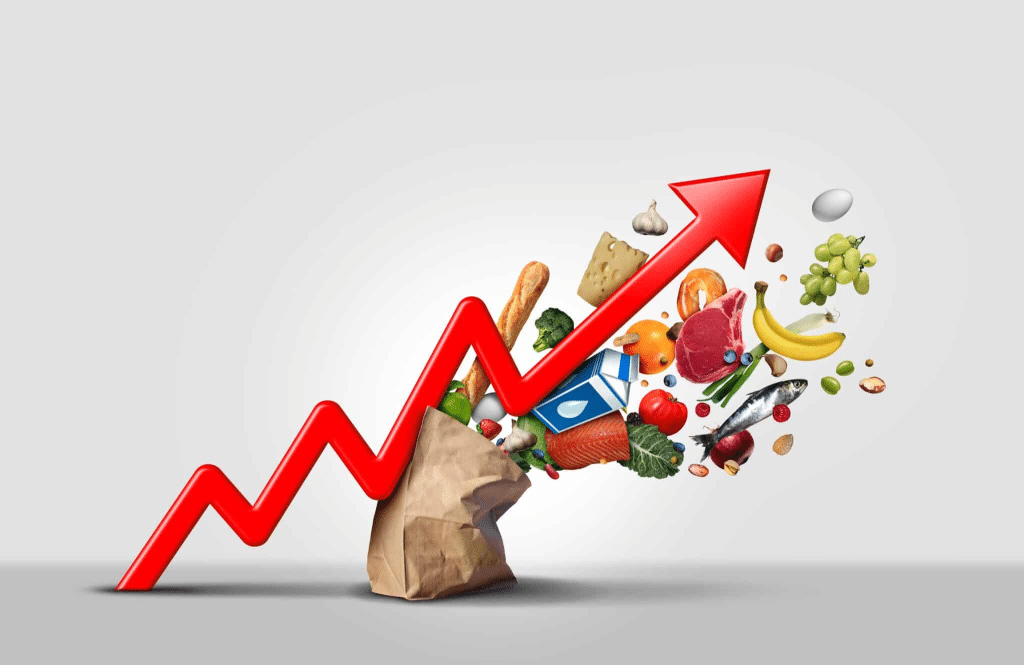Inflation is a concept that perhaps everybody understands from economic discourses but not many people seem to fully understand how they personally and particularly their savings are affected by it.
In its most basic form, inflation depicts the increase in cost of products and services in the market over a particular period of time, resulting to the decreased worth of money. Inflation can thus be deemed as a slow killer and a menace to anyone with savings as this erodes the value of the money.
It is therefore vital for one to learn how inflation actually takes place and how it affects one’s saving and expenditure patterns.

9 Steps to Understand How Inflation Affects Your Savings
Below are nine measures that will guide you in understanding the implications that inflation has on your money and how you could preserve and even increase your wealth:
1. Understand What Inflation Is
Inflation refers to the ability where general price level for goods and services increases thus reducing purchasing power of money. This in effect means that as time goes by one is going to buy less with the same amount of money.
For instance if the rate of inflation is 3%, this means that the price of goods and services in the economy increase at this rate, meaning, if today the price of a product is $100, the next year, it will be $103.
To start with, let me help you understand this basic concept that will bring to light as to how it influences your savings in the first place. Having said that, inflation is quite common in most economies and is normal, especially when it is moderate but high levels of inflation drain your money’s value fairly quickly.
2. Know How Inflation Affects Your Savings
This is the extent to which the goal of saving is affected by inflation, that is, due to inflation, total savings is always less than the total value as it decreases the value of total amount of money that has been saved.
Suppose you have 10000 kept in a savings account where it earns an interest of 1% per annum. Meaning for example if inflation is 3% then the purchasing power value of your savings reduces by 2% in a given year.
As a result, you will be earning interest on the money but in fact, your money is being devalued when considered under inflation factor. Cumulatively it may be quite profound especially if these savings were for future incidences or for use when you retire.
3. Differentiate Between Nominal and Real Interest Rates
To understand the rates of interests offered on savings accounts there is the concept of nominal interest rates and real interest rates.
The nominal interest rate is the one in which the banks set their interest and charged on the loan, while real interest rate is that which has been adjusted with The inflation rates prevailing in the country. For instance if the nominal rate of interest is 2 percentage point expected on a savings account and the inflation rate is 3 percentage point the real rate of interest will be a negative one percentage point.
4. Understand the Types of Inflation
There are various causes of inflation and knowing the types will assist you in estimating how it will impact on your savings. It implies the situation whereby demand for products and services requested is more than the available supply thereby leading to increase in prices hence demand-pull inflation.
Cost-push inflation is an inflation process whereby costs of production go up hence leading to an increase in prices. Systematic inflation is whereby employees demand an increase in their wages to cope with price hikes hence result in higher prices.
Awareness of such types allows you to realize that inflation is not a singular entity; it might be caused by various factors within an economy.
5. Assess the Impact on Fixed-Income Investments
Another part of your saved money that you can lose to inflation is those enjoyed in fixed-income investments such as bonds or CDs (Certificates of Deposit). This is due to the fact that in fixed interest securities, the interest which you earn does not change with changes in inflation levels.
If inflation rates go past the interest rate on these investments, their real return drops to the negative level hence shrinking your purchasing power. For instance if there is interest rate at 2% for bond and inflation is 4%, then the real returns is -2%. As such, one should consider inflation when select fixed income investments.
6. Explore Inflation-Protected Investments
One way of mitigaging against inflation as far as your savings are concerned is to invest on inflation hedges which include TIPS and Inflation-indexed bonds. This kind of investments are expected to appreciate in value in proportion to inflation hence defending the purchasing power.
For instance, as with TIPS, the principal is indexed with the CPI that measures the inflations. This means that as inflation goes up, the value of investment also goes up hence meeting the needs of the recipient. Purchasing inflation-protected securities can also turn out as wise in order to counterbalance the loss of your money.
7. Consider Diversifying into Real Assets
Inflationary periods favour real assets, which are assets like real estates, commodities etc. and even metals like the yellow metal (gold). Unlike cash or fixed income securities these oneself assets may hold or even appreciate with inflation.
Real estate for example offers almost ‘inflated’ rental value, while other investments such as gold, have been realized to offer certain value especially during most inflationary periods.
Investing some of your money in real assets is an effective way of combating inflation as well as lowering the general risks inherent in the investment.
8. Reassess Your Savings Strategy Regularly
Inflation rates are not constant, and therefore changes should be made on the saving strategies from time to time. If the inflation rate is going up, it is advisable to invest more on the investments that are less affected by inflation.
Also, one can also open high-yield deposit accounts or money market accounts that are slightly higher than the inflation rates.
It is therefore important to review and revisit this kind of strategies from time to time so that measures to fight inflation can be taken in an adequate manner to avoid compromising a lot of capital.
9. Plan for Long-Term Financial Goals
Thus, inflation should always be taken into consideration, when aiming at achieving a long-term goal, whether it is retirement, a home, or college tuition.
Even if it is low inflation rate over the decades, the value of the money that you have saved in the bank will reduce drastically.
Employ financial planning models and estimators that includes inflation in order to determine how much of your money will be needed in the future.
Inflation should also be handled with the help of a financial advisor who would help to develop an investment strategy, which might imply such things as inflation-adjusted assets, as well as investment diversification to ensure their purchasing power in the future.
Studying and taking into account the inflation allows you to think through the further financial planning and does not interfere with pleasant surprises.

